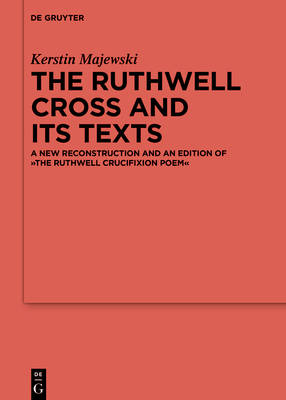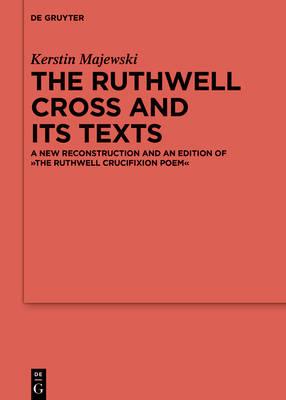
Je cadeautjes zeker op tijd in huis hebben voor de feestdagen? Kom langs in onze winkels en vind het perfecte geschenk!
- Afhalen na 1 uur in een winkel met voorraad
- Gratis thuislevering in België vanaf € 30
- Ruim aanbod met 7 miljoen producten
Je cadeautjes zeker op tijd in huis hebben voor de feestdagen? Kom langs in onze winkels en vind het perfecte geschenk!
- Afhalen na 1 uur in een winkel met voorraad
- Gratis thuislevering in België vanaf € 30
- Ruim aanbod met 7 miljoen producten
Zoeken
The Ruthwell Cross and Its Texts
A New Reconstruction and an Edition of the Ruthwell Crucifixion Poem
Kerstin Majewski
€ 317,45
+ 634 punten
Omschrijving
The Ruthwell Cross is one of the finest Anglo-Saxon high crosses that have come down to us. The longest epigraphic text in the Old English Runes Corpus is inscribed on two sides of the monument: it forms an alliterative poem, in which the Cross itself narrates the crucifixion episode. Parts of the inscription are irrevocably lost. This study establishes a historico-cultural context for the Ruthwell Cross's texts and sculptures. It shows that The Ruthwell Crucifixion Poem is an integral part of a Christian artefact but also an independent text. Although its verses match closely with lines of The Dream of the Rood in the Vercelli Book, a comparative analysis gives new insight into their complex relationship. An annotated transliteration of the runes offers intriguing information for runologists. Detailed linguistic and metrical analyses finally yield a new reconstruction of the lost runes. All in all, this study takes a fresh look at the Ruthwell Cross and provides the first scholarly edition of the reconstructed Ruthwell Crucifixion Poem--one of the earliest religious poems of Anglo-Saxon England. It will be of interest to scholars and students of historical linguistics, medieval English literature and culture, art history, and archaeology.
Specificaties
Betrokkenen
- Auteur(s):
- Uitgeverij:
Inhoud
- Aantal bladzijden:
- 423
- Taal:
- Engels
- Reeks:
- Reeksnummer:
- nr. 132
Eigenschappen
- Productcode (EAN):
- 9783110785395
- Verschijningsdatum:
- 24/10/2022
- Uitvoering:
- Hardcover
- Formaat:
- Genaaid
- Afmetingen:
- 170 mm x 244 mm
- Gewicht:
- 870 g

Alleen bij Standaard Boekhandel
+ 634 punten op je klantenkaart van Standaard Boekhandel
Beoordelingen
We publiceren alleen reviews die voldoen aan de voorwaarden voor reviews. Bekijk onze voorwaarden voor reviews.









